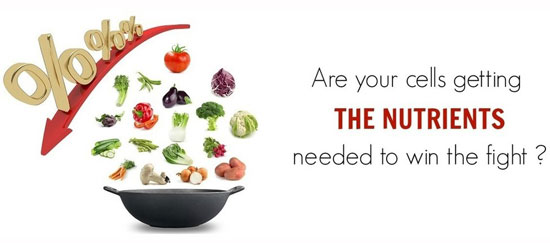Trace minerals found in fruits and vegetables declining over past 50 years

Fruits and vegetables may not be as nutritious for us as they once were, according to researchers. The main reason for this is farming methods that strip nutrients from both the soil and the produce itself. The result is reduced amounts of trace minerals in the crops.
Aggressive “modern” agricultural methods, genetic manipulation and the use of pesticides all take their toll on our food supply. Each successive generation of fruits and vegetables becomes less healthy than its predecessor. While many crops are grown faster today and are more pest-resistant, there is a price to be paid in terms of the quality of the crop and the level of minerals and other nutrients found inside.
Trace minerals in today’s fruits and vegetables up to 37 percent lower than in 1950.
A University of Texas study out of Austin’s Chemistry and Biochemistry Department looked at U.S. Department of Agriculture nutritional data gathered from the years 1950 and 1999. The researchers focused on 43 different fruits and vegetables.
The scientists found what they called “reliable declines” in trace minerals and vitamins in these fruits and vegetables over the past five decades, including vitamin C, calcium, phosphorus, riboflavin (vitamin B2), protein and iron. It is likely that there have been declines in zinc, magnesium, vitamins B-6 and vitamin E as well; however, these minerals were not measured in fruits and vegetables in 1950, so there are no markers with which to compare today’s levels. The study results were published in the Journal of the American College of Nutrition in December 2004.
Other research projects have found correlating results. The Kushi Institute did an analysis of nutritional data from the years 1975 and 1997. The average levels of calcium, iron, vitamin A and vitamin C had declined between 21 and 37 percent. A British study looking at 1930 and 1980 nutritional data found substantial declines in calcium, iron and potassium.
Farmers need to put nutrition first – not size, growth rate, crop yield or pest resistance.
The researchers attribute the declining nutritional content to modern agricultural methods designed to improve various traits unrelated to nutrition. Unfortunately, the pest resistance and growth rate of fruits and vegetables has become more important than nutritional value.
The agricultural industry has clearly lost its focus on public health. Breeding crops for greater yield and adaptability are understandable goals, but not if these actions are exacting such a heavy price in terms of the loss of nutrition. The new crops seem to be less able to uptake or generate key nutrients that were present in more abundance in fruits and vegetables decades ago.
One of the keys to more nutritious produce is richer, healthier soil. Rotating crops intelligently each season is crucial to preserving soil integrity. Avoiding GMOs and pesticides in favor of organic farming methods is another important step.
The researchers say that despite these declines, fruits and vegetables are still our best source for many vitamins, nutrients and phytochemicals. Buying organic as much as possible is one way to ensure you are choosing the fruits and vegetables with the highest available nutritional value.
yogaesoteric
July 4, 2017
